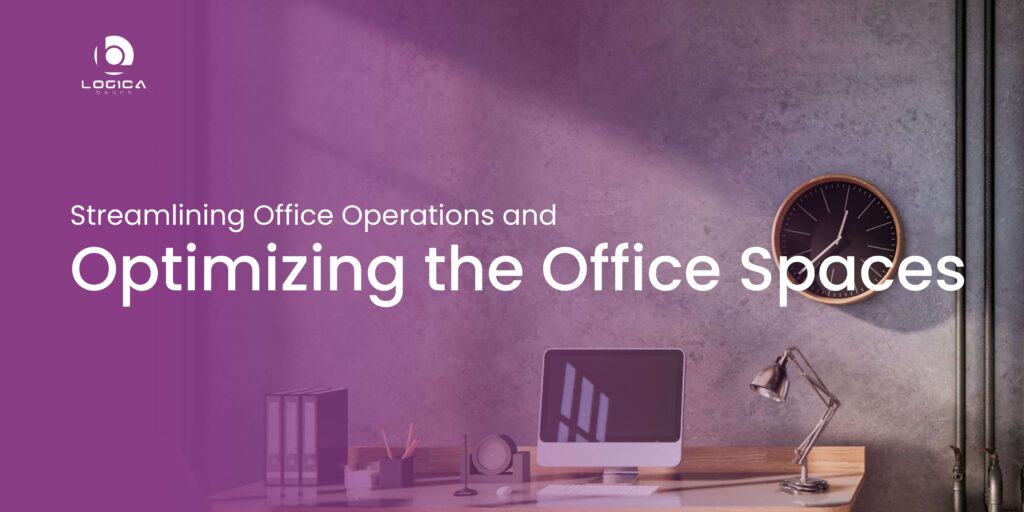In today’s business world, where technology and competition are constantly evolving, standing still is not an option. To stay ahead of the game, companies must constantly optimize and streamline their operations. By doing so, they can unlock new levels of efficiency, reduce costs, and create a work environment that nurtures creativity, productivity, and employee satisfaction.
Think of it this way, optimizing your office operations and spaces is like upgrading your car’s engine. It may take some effort, but the end result is a smoother, faster, and more efficient ride. The same goes for your business. By streamlining processes and creating an optimal work environment, you can supercharge your company’s performance and set it on a path to long-term success.
So, are you ready to rev up your business and unlock its full potential? Then, it’s time to explore the exciting world of office optimization and discover how you can transform your work environment into a high-performance machine.
What does it mean by streamlining office operations?
Streamlining office operations is the act of making daily duties and procedures that take place in an office setting more productive and efficient. By streamlining and improving company processes, the aim is to decrease waste, lower expenses, and increase productivity. This might encompass a wide range of operations, including standardizing processes, automating repetitive work, enhancing communication and cooperation, and lessening the administrative load on staff.
Increased productivity, more customer satisfaction, fewer mistakes, and a happier workplace environment are just a few advantages of streamlining office procedures. Businesses may be flexible and responsive to shifting market conditions and client demands by always looking for methods to simplify processes. In today’s fast evolving and competitive company environment, simplifying office processes is ultimately a crucial element of corporate success and development.
Streamlining office operations and optimizing office spaces
Any business plan must include elements aimed at streamlining office operations and making the most of workplace space. Companies may enhance efficiency, cut expenses, and boost staff productivity by simplifying their operations. On the other side, office space optimization may assist companies in using their existing resources and establishing a more pleasant and effective working environment.
Companies may automate routine procedures, use less paper, and utilize cloud-based technology to simplify office operations, among other methods. Businesses may employ digital technologies to improve team cooperation and communication, such as project management software, email, and instant messaging. Automating accounting and HR procedures can free up staff members’ time to work on more strategic projects while also easing administrative obligations.
In terms of office space optimization, companies can consider a range of strategies, such as reconfiguring their office layout to create more collaborative spaces, investing in ergonomic furniture to improve employee comfort, and incorporating green initiatives to reduce energy consumption. Additionally, businesses can also consider flexible working arrangements, such as remote work and flexible schedules, which can help to create a more efficient and productive office environment.
Here are the ways in streamlining the office operations:
1. Implement a task management system:
Assign tasks to specific team members, set deadlines, and track progress. This will help ensure that everyone is on the same page and that tasks are completed on time.
2. Streamline communication:
Use a centralized platform for communication, such as email or instant messaging, to reduce confusion and ensure that everyone is on the same page.
3. Automate repetitive tasks:
Use technology to automate tasks that are repetitive and time-consuming, such as data entry or scheduling appointments.
4. Optimize your workspace:
Create a comfortable and organized workspace that promotes productivity. This includes decluttering and organizing your desk, using ergonomic furniture, and ensuring that your computer and other equipment are set up in an optimal way.
5. Take advantage of cloud-based tools:
Cloud-based tools such as Google Drive or Dropbox can help you access and share files from anywhere, making collaboration and teamwork easier and more efficient.
6. Prioritize team training:
Invest in training to help your team members develop new skills and work more efficiently. This will help to increase productivity and reduce errors.
7. Encourage flexibility:
Flexible working hours and remote working options can help to reduce stress, increase job satisfaction, and boost productivity.
8. Regularly review and evaluate:
Regularly review and evaluate your office operations and processes to identify areas that need improvement. This will help you to stay on top of any problems and make sure that your office is running as efficiently as possible.
Common problems faced while streamlining operations
When you begin the process of streamlining, there will be certain similar problems regardless of the size of the firm. But being aware of these issues and understanding how to spot them might help you manage them successfully.
Here are the five typical issues that you may run into when your company is trying to streamline operations:
● Automation of processes
In any business, there is a good chance that a number of tasks are monotonous and repetitive, causing exhaustion and a waste of time. Without identifying these duties and devising a means of automating them, a great deal of expertise and time may be lost. Therefore, we must identify the precise processes that need to be automated, have the necessary resources and infrastructure, and choose the best strategy. At this point, it would be wise to look for a solution that would enable you to recognize and automate particular portions of various procedures.
● Language barrier
Many businesses have offices spread throughout multiple nations in addition to numerous locations in the same region. When information needs to be shared internationally among teams or when teams or members need to understand their duties and responsibilities, the language and methods of communication might provide a barrier that hinders the streamlining of operations in such situations. To accommodate geographically dispersed teams, you may require a unified method that enables you to publish the material in several languages.
● Ease of operation
Mobility is sometimes the biggest barrier to efficient operations and, hence, ease of operations. Due to concerns about compliance and security, many businesses are hesitant to permit mobility. Today’s solutions, however, make it simple for users to access the system from a mobile device as long as they have the skills necessary for the job. This increases the system’s usability.
● Lack of visibility
The duties and responsibilities of personnel are frequently not fully understood, and as a result, operations are frequently not simplified. Operational efficiency can only be achieved when employee roles are aligned with the corporate objectives as a whole. In order to maintain track of employee objectives and tasks, a solution that allows us to get a full picture of each employee through a single hub may be useful. The demands for security and compliance must be carefully balanced with the issue of visibility.
● Access to best practices
We are privileged to have access to the greatest knowledge nowadays since the world of technology has advanced so much. On the other hand, it is challenging to find the best practices that are right for your business because of the overabundance of information that exists nowadays. By bridging knowledge gaps, empowering workers, and improving efficiency, sharing best practices may help businesses improve performance and productivity. In order to enable process simplification, continuous process improvement guarantees that the best practices that are effective for your sector are applied.
By now you may have already known about the tips in streamlining the office operations and the common problems that are faced in streamlining operation. Now let’s talk about the tips for organizing and optimizing the office spaces.
An efficient and well-designed office setting may boost output, lower stress levels, and improve the working environment for staff members. Additionally, it may leave a lasting impact on visitors and customers. But when it comes to arranging and maximizing the workplace space, it might be challenging to know where to begin with so many duties and obligations.
Organizing and Optimizing the Office Spaces
Creating a practical and effective layout and design, as well as putting in place mechanisms and processes to guarantee the optimum use of resources and space, are all part of organizing and optimizing the office spaces.
A methodical approach is needed when organizing and optimizing the office spaces setting in order to produce a conducive and effective working environment. Assessing the needs of the staff and the work being done in the area is the first step. This entails determining the required tools and equipment, the quantity of workers, and their job preferences. The next phase is to develop the layout and design of the area, taking into account the resources at hand as well as the need for privacy, cooperation, and technological access. An office area that is optimized can also benefit from the use of modular furniture, ergonomic tools, and suitable lighting.
Productivity is the heart of every business. If you want your team to be more productive, it can come down to the layout and atmosphere of your office. Not simply the location, but also the configuration of office furnishings and technology, the flow between work areas, and the overall vibe of your company.
Tips for organizing and optimizing office spaces:
1. Start by creating a plan:
Before you begin organizing your office space, take a few minutes to create a plan. Identify the areas that need the most attention and prioritize them.
2. Getting rid of unwanted stuffs:
Get rid of anything you no longer need, including old papers, broken equipment, and unnecessary decorations. This will free up space and make it easier to organize the remaining items.
3. Maximize vertical space:
Use shelves, wall organizers, and other storage solutions to make the most of the space you have available.
4. Implement a filing system:
Keep important documents and papers organized and easy to find by using a filing system. You can use folders, binders or digital systems.
5. Use storage containers:
Use boxes or bins to keep small items organized and easy to find.
6. Ergonomics:
Consider the layout of your office space and ensure that it is ergonomically sound. This includes proper lighting, comfortable seating, and positioning of computer screens.
7. Keep frequently used items within reach:
Keep the items you use most often within easy reach to minimize the need to stand up and walk around the office.
8. Create a comfortable and inviting environment:
Add plants, artwork, or other personal touches to make your office space more comfortable and inviting.
9. Regularly review and reassess:
Regularly review and reassess your organization system to make sure it is still working or you and make adjustments as needed.
10. Think about the future:
Consider the potential for future growth and changes and plan for them in your organization and optimization process.
Conclusion
Numerous advantages may be gained for your company by streamlining office procedures and making the most of your office space. You may provide the groundwork for expansion and achievement by increasing productivity, cutting expenses, and fostering a healthy work environment for your staff.
Include your staff in the process since they frequently offer useful insights into how the workplace is run on a daily basis. Use technology to lessen the administrative workload on your staff, simplify repetitive activities, and enhance communication and cooperation. Utilize frequent employee feedback, performance measurements, continuing data analysis, and trend analysis to continuously evaluate and revaluate the success of the adjustments implemented.










